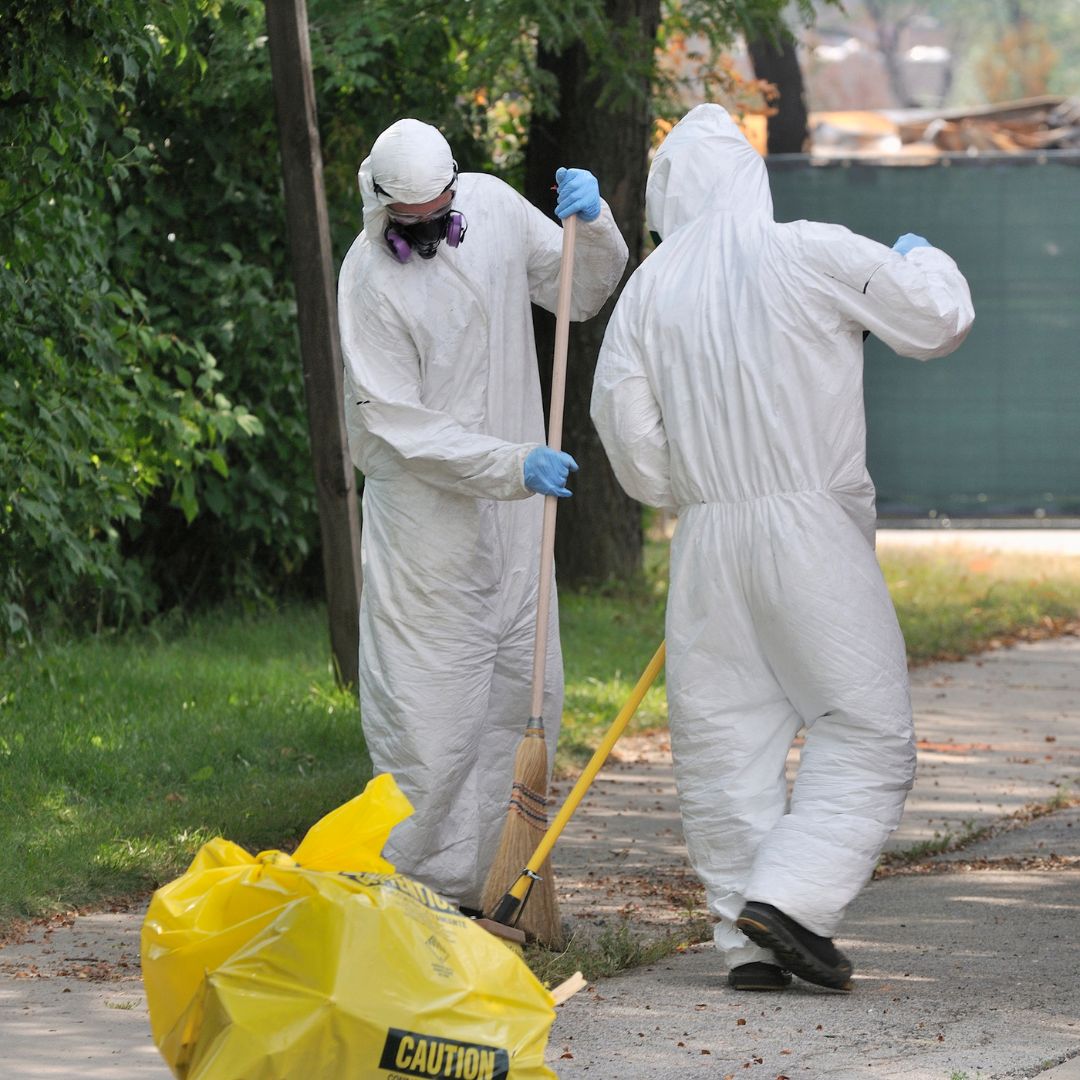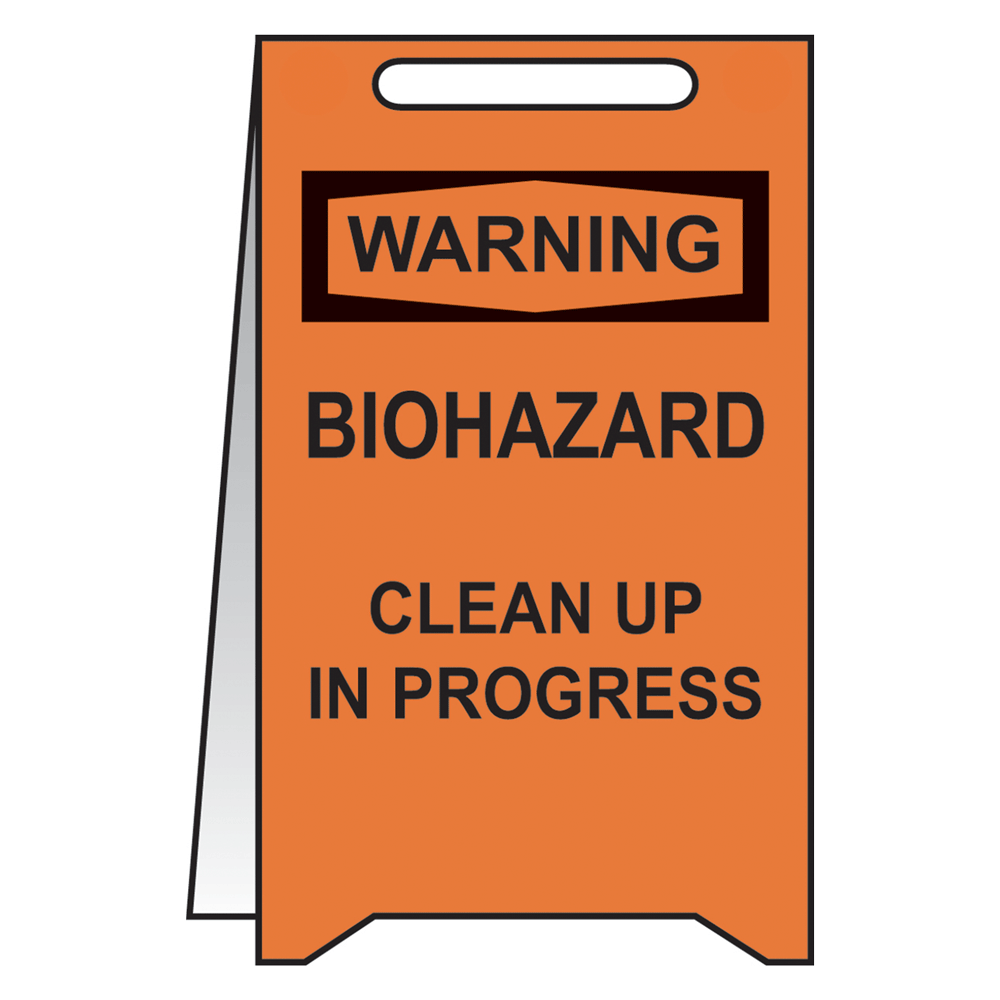Biohazard Removal: Safe Handling and Disposal of Hazardous Products
Biohazard Removal: Safe Handling and Disposal of Hazardous Products
Blog Article
Specialist Biohazard Cleansing and Purification for Blood, Bodily Fluids, and Hazardous Products
The prospective health and wellness threats connected with direct exposure to biohazards highlight the critical demand for careful handling and thorough clean-up. As we browse the intricate landscape of biohazard clean-up, recognizing the subtleties of policies, conformity, and the customized equipment at play becomes critical in guaranteeing a risk-free and detailed purification procedure.
Wellness Risks of Biohazard Exposure
Exposure to biohazards positions considerable wellness threats that can cause severe consequences for communities and individuals alike. Biohazards include a wide variety of biological compounds, including blood, bodily fluids, mold and mildew, microorganisms, infections, and other potentially transmittable products. When people enter call with these biohazards, whether via crashes, improper handling, or environmental exposure, they face the risk of contracting major diseases or diseases.
One of the key wellness threats related to biohazard direct exposure is the transmission of contagious illness. Bloodborne pathogens such as HIV, hepatitis B and C, and numerous microorganisms can be existing in biohazardous materials, positioning a direct hazard to human wellness. Breathing in airborne biohazards like mold spores or coming right into call with polluted surfaces can additionally bring about respiratory system issues, allergic reactions, and various other unfavorable health and wellness effects.
Furthermore, biohazard direct exposure can have long-lasting wellness ramifications, with some diseases showing up years after the preliminary get in touch with (Blood Cleanup). As a result, it is critical to prioritize proper biohazard cleansing and decontamination to minimize these health and wellness risks and make sure the safety of areas and individuals

Specialized Educating for Biohazard Clean-up
When it comes to managing biohazard cleaning efficiently and safely, specialized training plays an essential duty in ensuring appropriate purification treatments are adhered to. Biohazard cleanup needs certain expertise and abilities to effectively reduce dangers related to bloodborne virus, physical liquids, and hazardous products. Specialists trained in biohazard clean-up undergo rigorous instruction on exactly how to safely take care of, remove, and throw away biohazardous products to protect against contamination and direct exposure.
Specialized training for biohazard cleanup covers a variety of crucial subjects, consisting of correct individual safety tools (PPE) use, bloodborne microorganism understanding, purification methods, and harmful waste disposal procedures. People learnt biohazard clean-up are geared up with the essential knowledge to examine contamination degrees, recognize possible threats, and implement appropriate cleaning treatments in compliance with regulatory criteria.
Continual training and education and learning are critical in the field of biohazard cleanup to stay upgraded on the current decontamination technologies, safety methods, and guidelines. By investing in specialized training, biohazard cleaning experts can efficiently react to emergency situation cleanup scenarios and secure both public health and wellness and the environment.
Relevance of Appropriate Purification Methods
Utilizing proper decontamination strategies is critical in biohazard cleaning to successfully get rid of hazardous products and minimize health threats. Effective purification not only makes certain the removal of noticeable traces of blood, bodily liquids, and other biohazards however also targets undetectable pathogens that may posture major wellness threats if not effectively removed. By adhering to rigid purification procedures, educated professionals can substantially lower the risk of exposure to unsafe microorganisms, viruses, and microorganisms that could cause diseases or infections.
Appropriate purification techniques involve the usage of customized equipment and anti-bacterials that are specifically developed to counteract biohazards properly. Comprehensive cleaning and sanitation of infected locations are necessary to stop the spread of virus and make certain a risk-free environment for residents. Furthermore, the right disposal of biohazardous waste adhering to purification treatments is vital in stopping contamination of various other surfaces or individuals.

Tools and Devices for Safe Clean-up
The more tips here proper tools and devices play a critical function in guaranteeing the safe and reliable cleanup of biohazardous products. When taking care of blood, bodily fluids, or unsafe products, biohazard cleaning professionals rely upon specialized equipment to reduce direct exposure dangers and thoroughly sanitize the affected location. Personal safety devices (PPE) such as gloves, coveralls, masks, and goggles are vital to protect against direct call with possibly infectious products. In addition, biohazard cleansing sets including disinfectants, absorbing materials, and biohazard bags are used to safely have and dispose of polluted items. Blood Cleanup.
Advanced cleansing tools like hospital-grade anti-bacterials, HEPA-filtered vacuum cleaners, and fogging devices are utilized to sanitize surface areas and get rid of biohazards effectively. Specialized equipment such as sharps containers and biohazard waste disposal containers are made use of to securely take care of sharp objects and biohazardous waste materials. By using the right devices and tools, biohazard cleansing experts can make certain a comprehensive clean-up process that prioritizes security and lessens wellness threats for both employees and owners of the damaged room.
Rules and Conformity in Biohazard Cleaning
Appropriate adherence to regulations and compliance criteria is paramount in biohazard cleaning to ensure the safety of both employees and the setting. Federal government companies such as OSHA (Occupational Safety And Security and Wellness my sources Management) and the EPA (Epa) have actually established particular standards for biohazard clean-up procedures to minimize health threats and ecological contamination. These guidelines cover a variety of aspects consisting of the handling, transport, and disposal of biohazardous materials, as well as the necessary training and safety devices required for employees entailed in the clean-up process.
Biohazard cleansing business should remain updated with these regulations to guarantee that their operations meet the needed security standards. Failing to follow these regulations can cause serious consequences, consisting of fines, lawsuit, and threatening the health and wellness of people and the atmosphere. By complying with rigid guidelines and compliance measures, biohazard cleansing companies can properly reduce threats and guarantee a complete and secure cleanup procedure for all events included.
Verdict
In final thought, biohazard cleansing and decontamination need customized training, correct strategies, and adherence to guidelines. Exposure to blood, physical liquids, and dangerous materials postures considerable wellness risks, making it vital to use the best devices and devices for secure clean-up. By following stringent protocols and standards, experts can effectively minimize the risks related to biohazard direct exposure and ensure the security of both themselves and others.
As we navigate the complex landscape of biohazard cleaning, recognizing the nuances of laws, compliance, and description the customized equipment at play comes to be critical in making sure a safe and complete purification procedure. (Blood Cleanup)
When it comes to managing biohazard cleaning effectively and securely, specialized training plays a fundamental duty in ensuring appropriate purification procedures are complied with.Making use of proper decontamination methods is important in biohazard clean-up to efficiently eliminate dangerous materials and minimize wellness dangers. Furthermore, biohazard cleaning kits having anti-bacterials, absorptive products, and biohazard bags are utilized to safely dispose and contain of infected things.
Government agencies such as OSHA (Occupational Safety And Security and Wellness Administration) and the EPA (Environmental Protection Firm) have established details guidelines for biohazard cleanup treatments to minimize health risks and environmental contamination.
Report this page